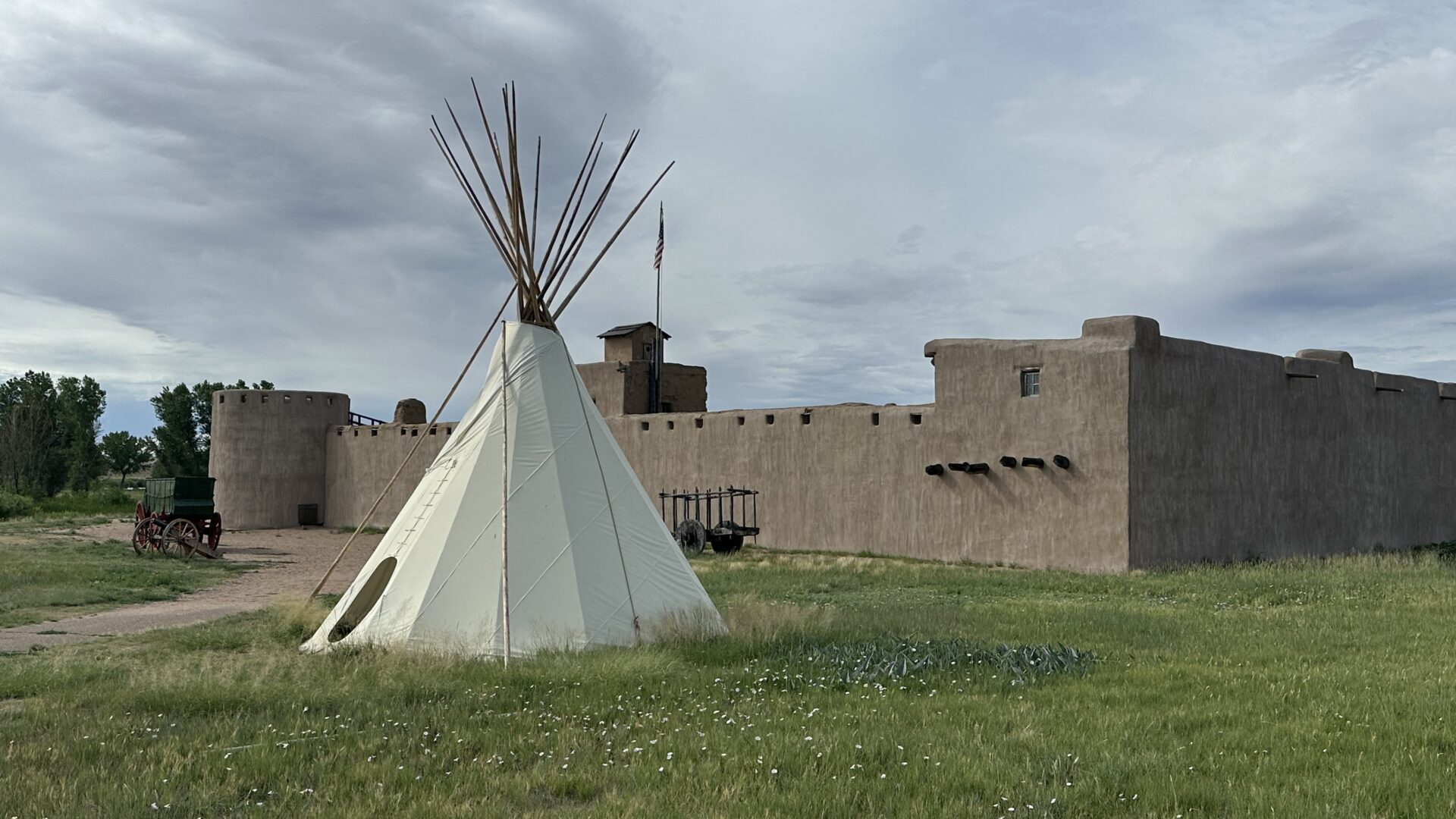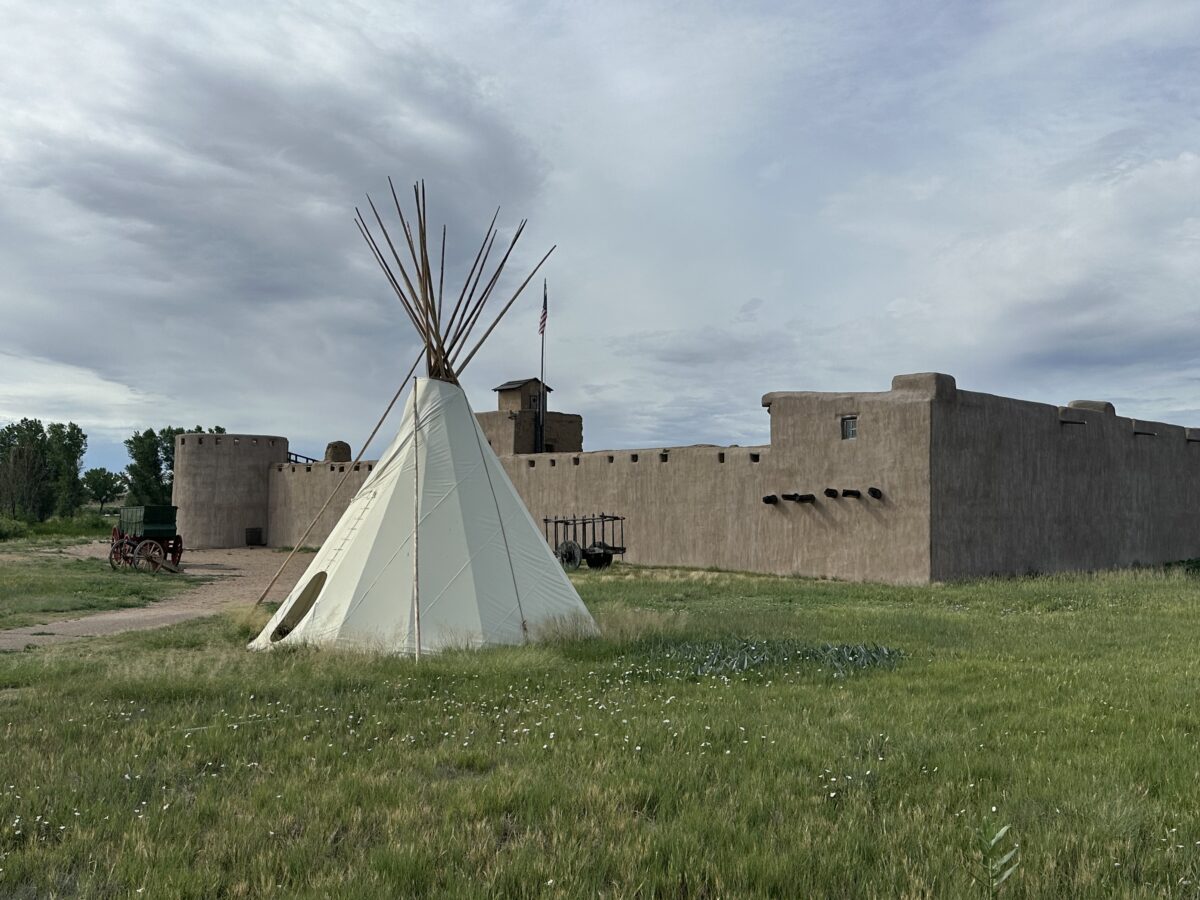Revisiting Bent’s Old Fort National Historic Site
We recently had the opportunity to revisit Bent’s Old Fort National Historic Site, when we were in southeastern Colorado to visit Amache – one of the newest national historic sites in the US. Unlike Amache, Bent’s Old Fort has been part of the National Park Service since 1960.
We visited Bent’s Old Fort and wrote about it in another blog. This visit we were able to stay a bit longer. It was cooler, allowing us to enjoy the stroll from the fort to the river – a 1.8 mile loop through huge cottonwood trees.
Ranger Tour
We were also able to stay around to participate in the Ranger-led tour. That was so worth our time! Even though we had visited before and walked through the entire fort, we learned so much more this visit. The ranger was so knowledgable and enthusiastic. She really made it interesting and fun for all ages.
Fur Trade
One of the key trade items at Bent’s fort were furs. One of the things the ranger pointed out was a box thing in the middle of the courtyard of the fort. We had thought it was a covered up well, but it is actually a Bison Fur Press. Each year over 15,000 furs were shipped east in the spring. To make them compact for the journey, they were pressed flat.
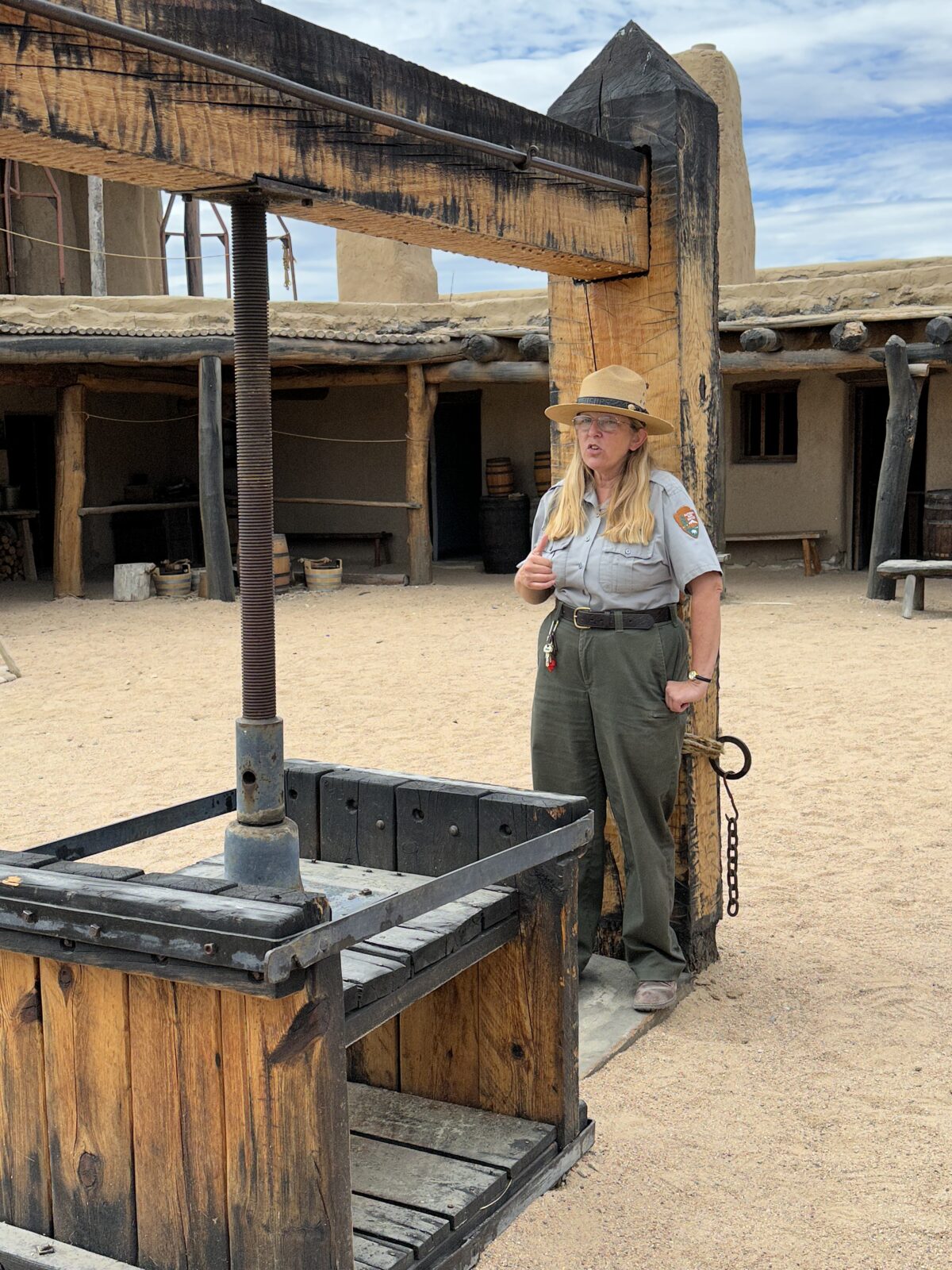
Also as part of the ranger-led tour, we were able to go into the fur storage room. It was full of furs – bison, beaver, fox, mink and more – several thousands of dollars worth of pelts. The ranger said that a bison pelt would have been about $5 in trade (that’s about $1000 in today’s money.) This same pelt would have been shipped back east and sold for at least double that amount.
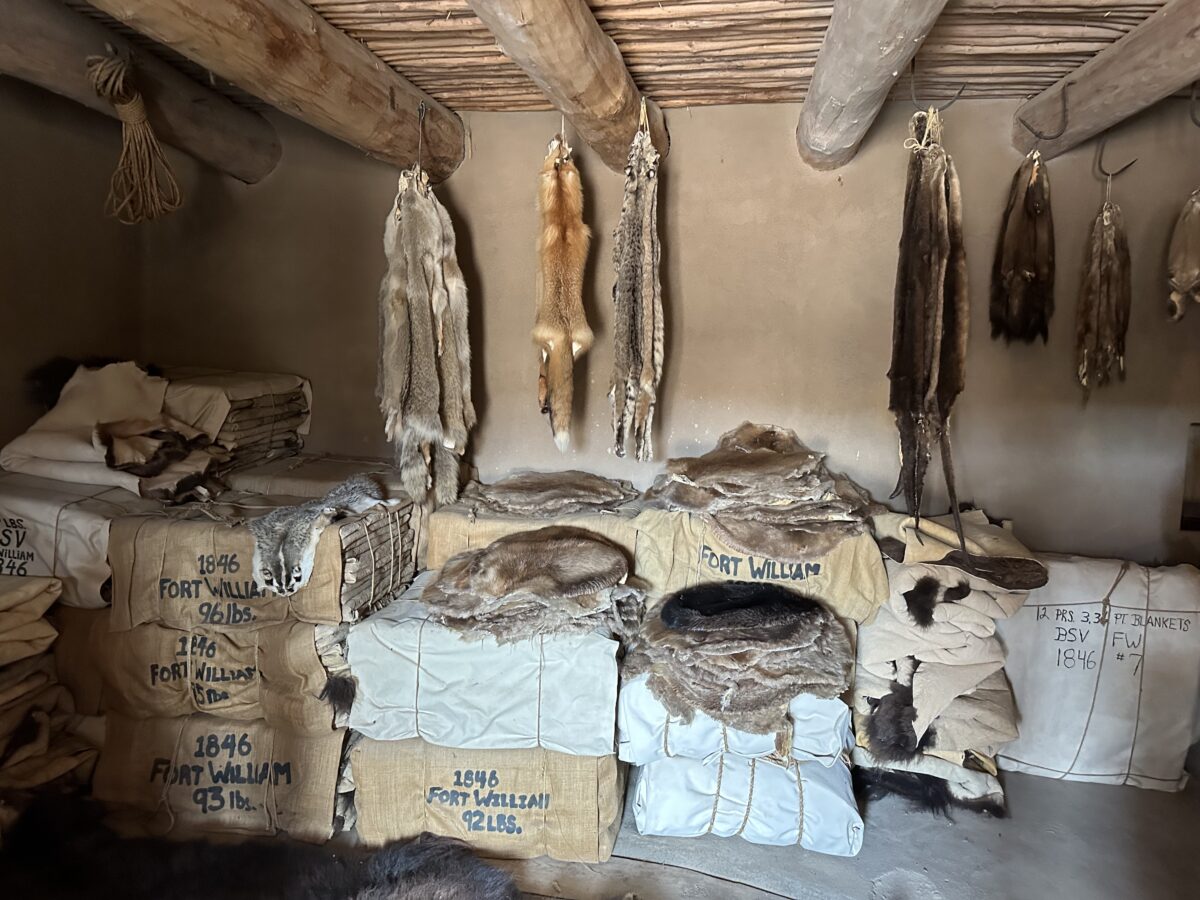
Indians bought these furs and other trade items to the fort, and exchanged them for blankets, tools, guns, powder, knives and other manufactured goods. In spring they would ship the furs back east by wagon train; which returned in the fall with a new load of trade goods.
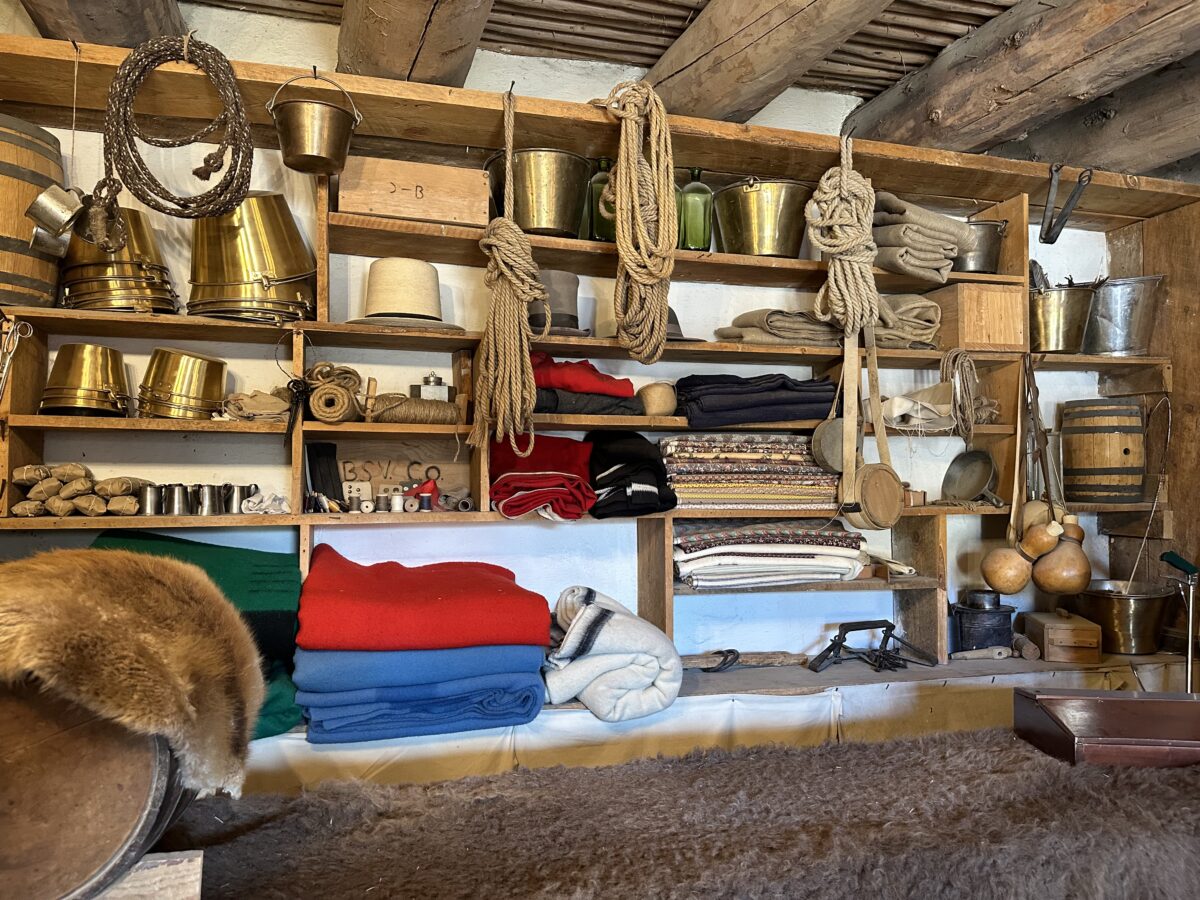
People
The ranger also brought to life all of the different people who kept the fort going. There were about 60 people who lived full time at the fort and as many as a couple of hundred travelers passing through for a few days. It was not uncommon to hear English, Spanish, and French, plus the language of the Cheyenne and other tribes. One of the Bent brothers was married to a Cheyenne bride, Owl Woman.
Many of the men who built the fort initially were from Mexico, and once it was built, there were several Mexican families who stayed on to live and work there – drawing water, cutting wood, repairing adobe walls, tending animals. They were paid, but lived in cramped quarters in just a few small rooms.
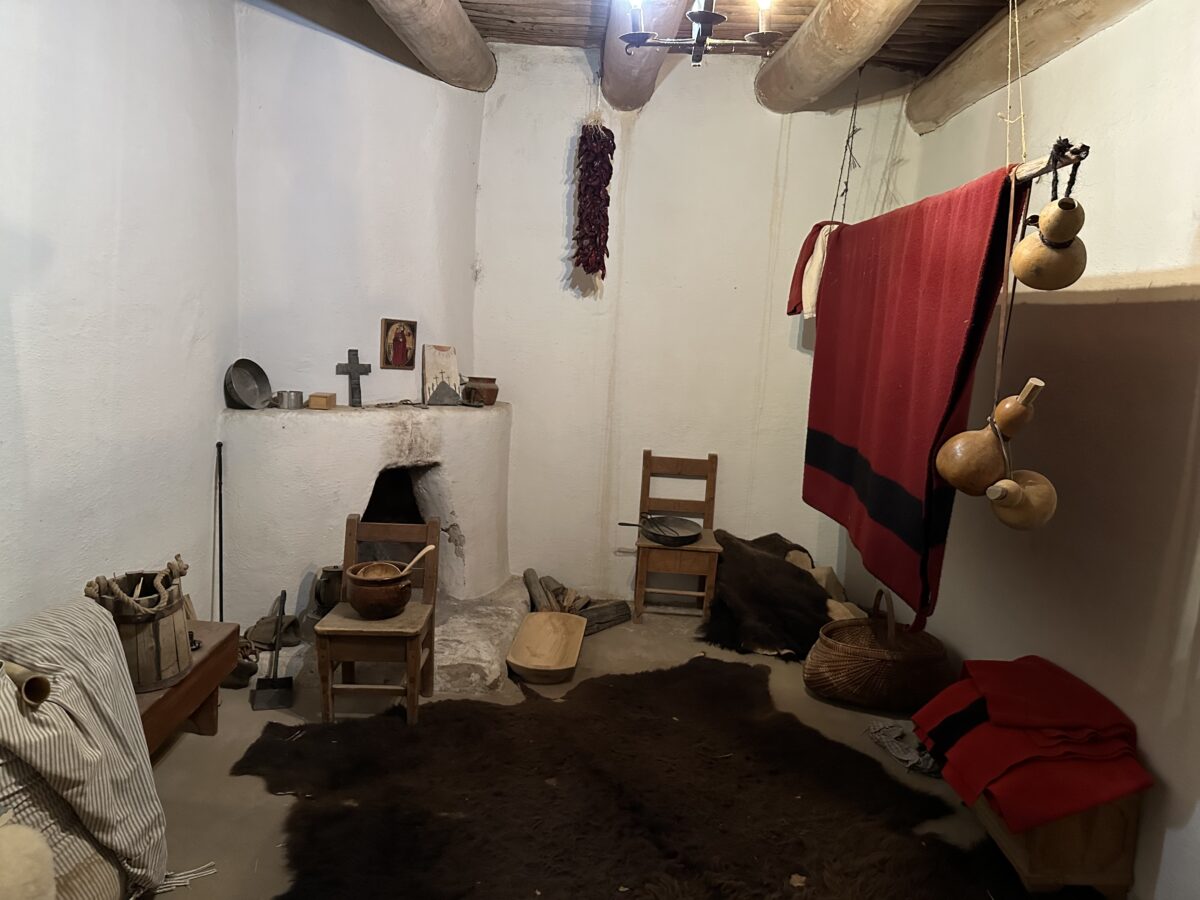
There were also slaves at the fort. The ranger showed us where one slave couple slept under the stairs in the kitchen. The wife cooked for the Bent brothers, their families and guests.
There were also tradesmen. You might think of Bent’s fort not just as a trading post, but the only service station for hundreds of miles!
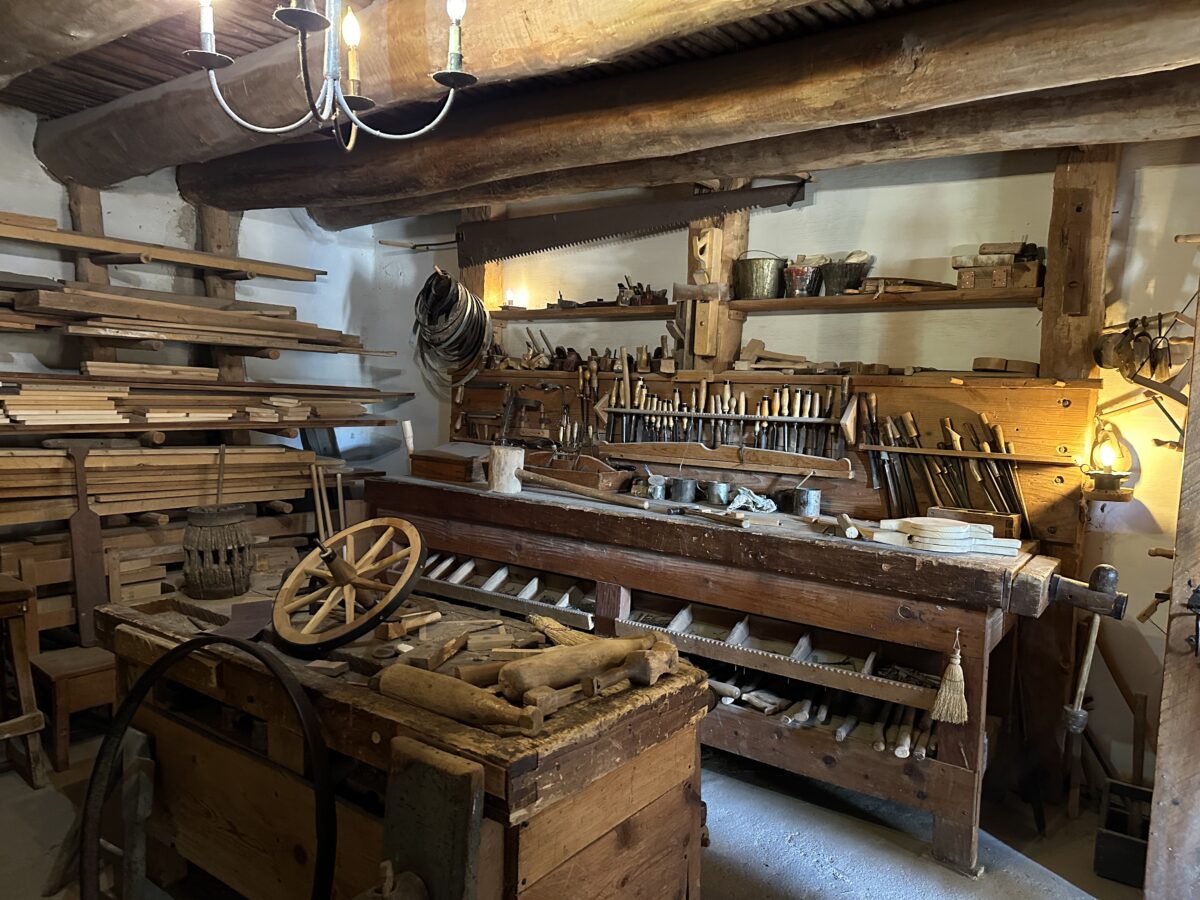
Wagons built back east slowly deteriorated as they journeyed west. Wagon wheels were especially an issue as the wood dried out and shrank, pulling away from the iron band. Bent’s had a full service operation, with a carpenter, wheelwright, and forge. They even had a seamstress. Pretty much anything that was needed to get travelers on their way.
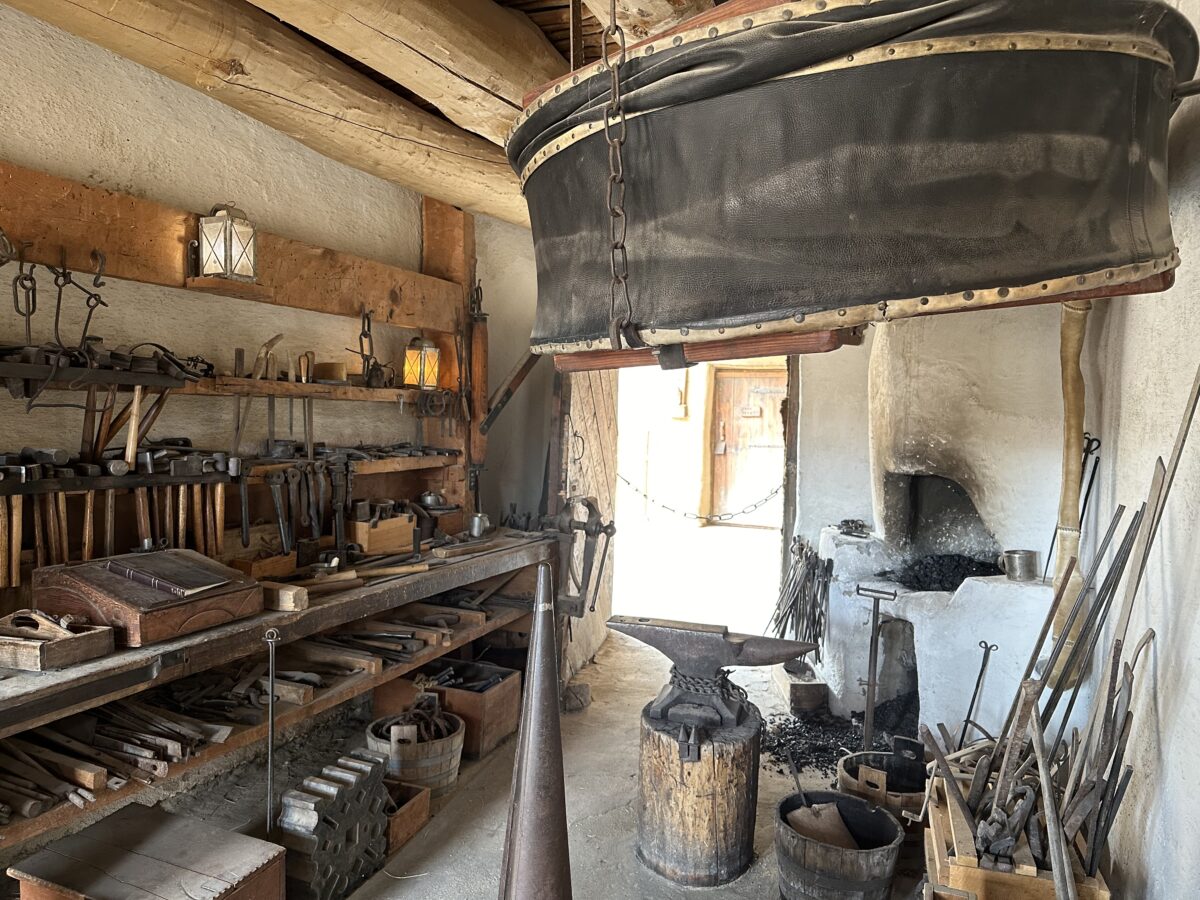
History
The Ranger also shared some of the history of the fort. In operation for over 16 years, it was once one of the most profitable businesses in the US. But, by 1849 when the fort was finally closed, the bison had been killed off and the wood was depleted.
The Mexican-American war pretty much finished the fort. Mexico surrendered the territory of what is now known as New Mexico, spelling the end of cross-border trade between the US and Mexico from Bent’s fort. One of the brothers, Charles Bent, became the first governor. This was perhaps not the best decision on his part. Many of the people in New Mexico were not all that happy being part of the United States and many hated Bent. He was soon killed in an uprising.
The other brother, William Bent, stayed on at the fort after the Mexican-American war and tried to keep it in business. But a cholera epidemic among the Cheyenne Indians decimated the tribe and some of his family. He ended up back east, where he contracted pneumonia and died at the age of 59.
The history of the fort and it’s people is tied up in the circumstances of the time… the Santa Fe trail, westward expansion, the Mexican-American War and the ongoing Indian wars. It is impossible to learn all about this in a two hour ranger walk, but it sure is interesting to get their perspective on this rich and complex history.
Are you trying to visit all the National Parks, or National Park Units?
If your goal is to visit them, one or all, we’d love to help you strategize. Give us a call at (480) 609-3978 or drop us a note here. We always enjoy talking with people who share our passion for visiting these gems of the National Park Service.
#FindYourPark
#SeeAmericaFirst
